Museum’s new The Souls of the Game exhibit debuts to rave reviews
The National Baseball Hall of Fame and Museum debuted its new exhibit exploring the Black Baseball Experience on Friday. But the stories emanating from that exhibit are only just beginning.
The Souls of the Game: Voices of Black Baseball is a groundbreaking new exhibit, sharing the decades-long history of Black baseball prior to the formation of the Negro Leagues, through the complexities of baseball’s re-integration, to the challenges that remain today.
A ribbon-cutting ceremony in the Hall of Fame’s Grandstand Theater took place on Friday, May 24, and the audience included more than a dozen Hall of Famers and many of the recently retired big leaguers participating in the next day’s Hall of Fame East-West Classic at Doubleday Field.
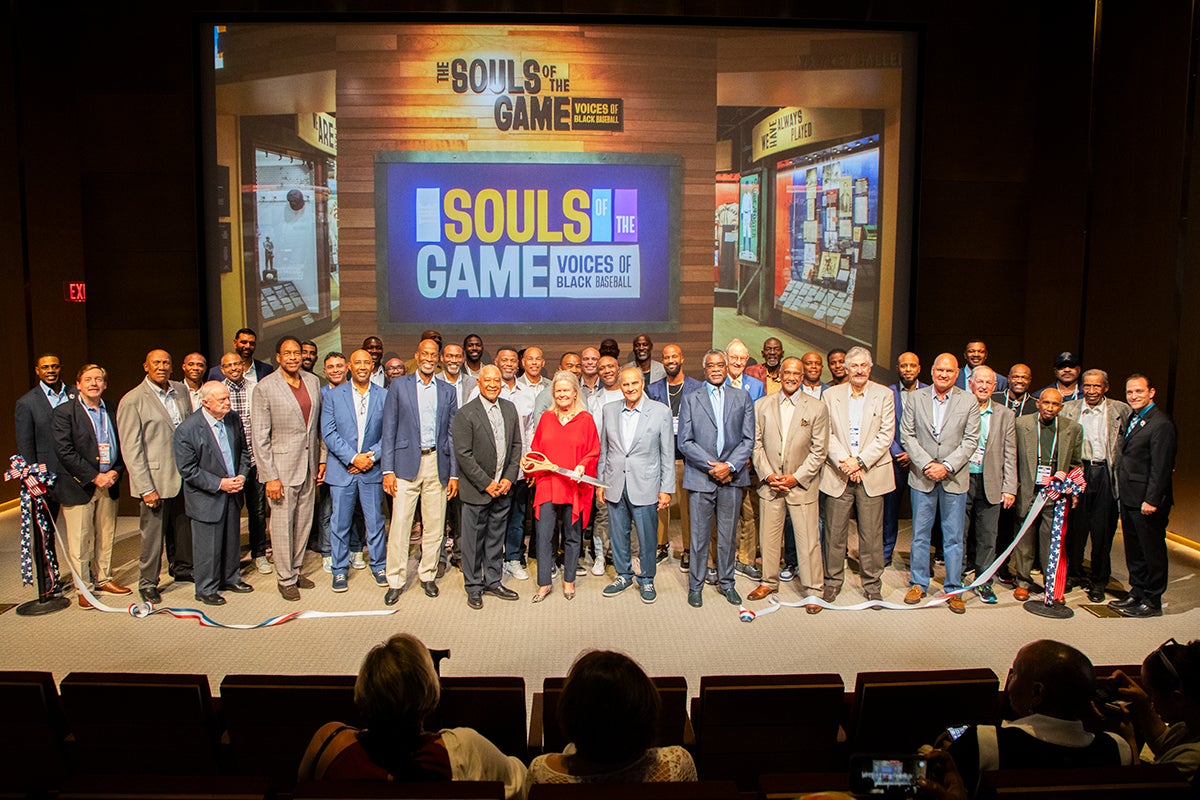
Hall of Fame Board Chairman Jane Forbes Clark was the first to address the crowd from the podium on Friday, setting the tone for the historic night.
“The initiative behind The Souls of the Game: Voices of Black Baseball began several years ago because we knew it was important to evolve the way a museum explores the history of Black baseball. Its impact on the game and its impact on our country,” she said. “For the past 85 years, we have been focused on preserving history, honoring excellence and connecting generations. And we believe this new exhibit will accomplish each of those goals as it tells of the Black experience through the voices and the words of those who lived it.”
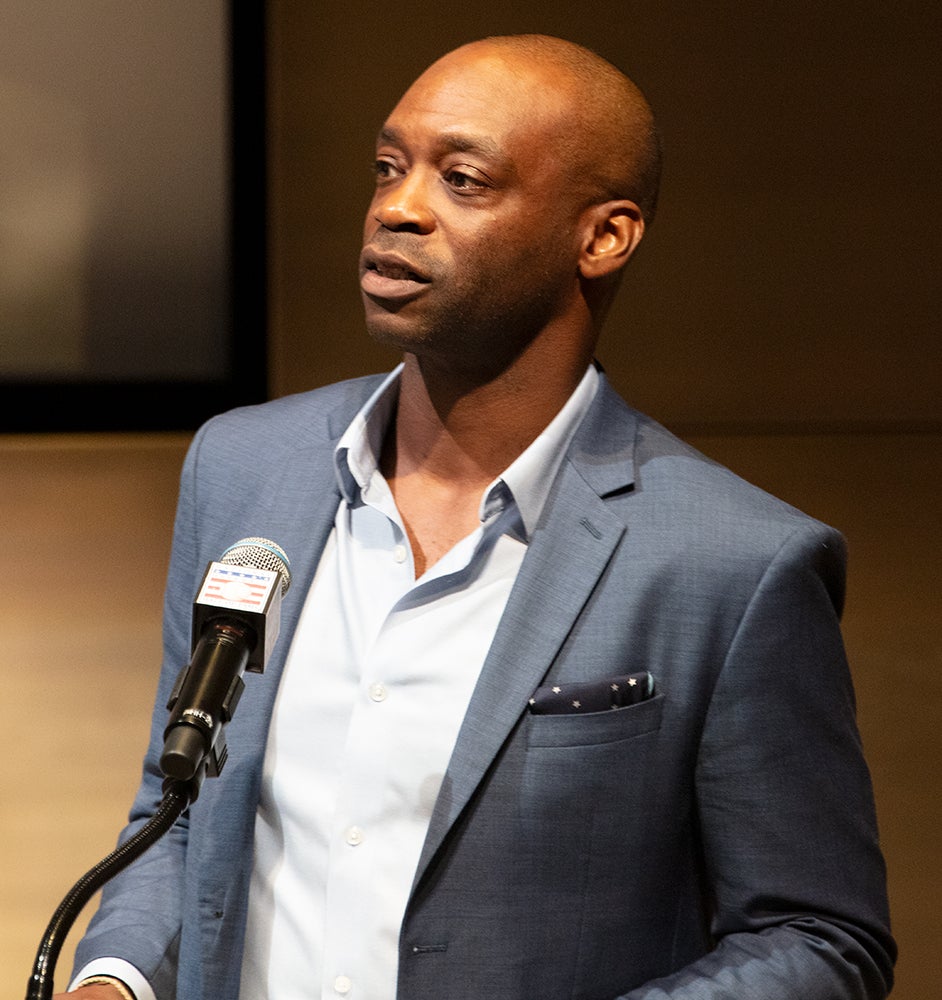
Curatorial consultant Rowan Ricardo Phillips, a multi-award-winning poet, author, screenwriter, academic and journalist, spoke elegantly about the history and future of Black Baseball.
“Satchel Paige famously said, ‘Don’t look back. Something might be gaining on you.’ This reflects not only his personal philosophy but also the resilience and forward-looking attitude that many Black baseball players have had to adopt in the face of racial adversity,” Phillips said. “But now perhaps we can say, ‘Look back: something is gaining on you,’ and turn to not only face what’s there but also embrace it as well. As you round the bases of the exhibit, take a moment to turn around and look back. Hopefully, something is gaining on you.
“This exhibit opens as a window to the past, offering a glimpse into the legacies of the Black baseball players who did more than play a game. Black baseball executives who did more than administer the game. Black baseball fans who did more than watch the game. And Black baseball writers who did more than report on the game. They all helped shape this nation.”
Phillips then added that Black baseball is not only about excelling on the diamond; it is about the pioneers, community leaders, and advocates for justice whose contributions extend far beyond the boundaries of any ballfield – for Black baseball touches the very soul of America.
“Therefore,” he continued, “let us remember the enduring spirit of these people who gave themselves to the game with unwavering determination and dignity. Let their legacy inspire us to continue the work of making our world a more inclusive, just, and compassionate place. So long live baseball. And long live these beautiful souls of the game.”
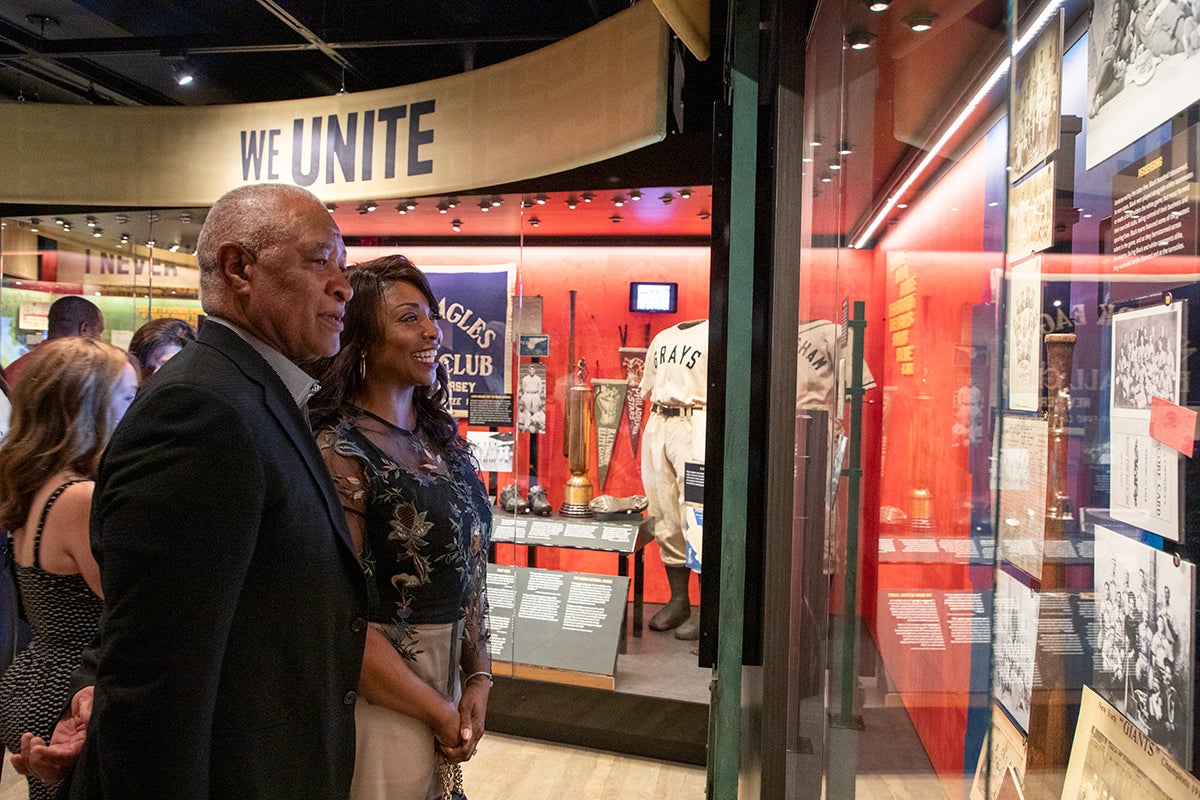
The evening’s last speaker was Hall of Famer Ozzie Smith, Class of 2002, and a member of the Hall’s board of directors who not only served on the Advisory Committee for the exhibit but also serves as the Hall’s Education Ambassador.
“As a Black man, I’ve been proud to see the Hall of Fame take the time, the effort and the initiative to develop this project and to celebrate the accomplishments of those who came before and after me, as well as the challenges we have faced and continue to face,” he said. “I’m proud to be included in this exhibit as one of the voices of Black baseball. And just like many of you, I am committed to ensuring that more and more young Black people fall in love with the game like all of us did. That’s one reason why I became the Hall of Fame’s education ambassador as soon as I got elected. That’s also why the Hall of Fame offers an Ozzie Smith Diversity Scholarship as part of its internship program. It’s also why I agreed to serve on the advisory committee of this project from the very start.
“I had the chance to see the exhibit last night before it opened and I can tell you, it is something we can all be very proud of,” Smith said. “And during my induction in 2002, I first got to see the previous exhibit that focused on Black baseball. It was just five years old. It had opened in 1997 as part of the celebration of the 50th anniversary of Jackie Robinson breaking the color barrier and it was a groundbreaking exhibit at that time. But over the last two decades, history has continued to be made. And the lens of time allows us to better reflect on the players who came before us and the circumstances that they faced. That’s why I’m so glad that The Souls of the Game is not just an update of the previous exhibit. With 25-plus years more history included it is completely new. And it tells the story from the perspective of those who have lived it.”
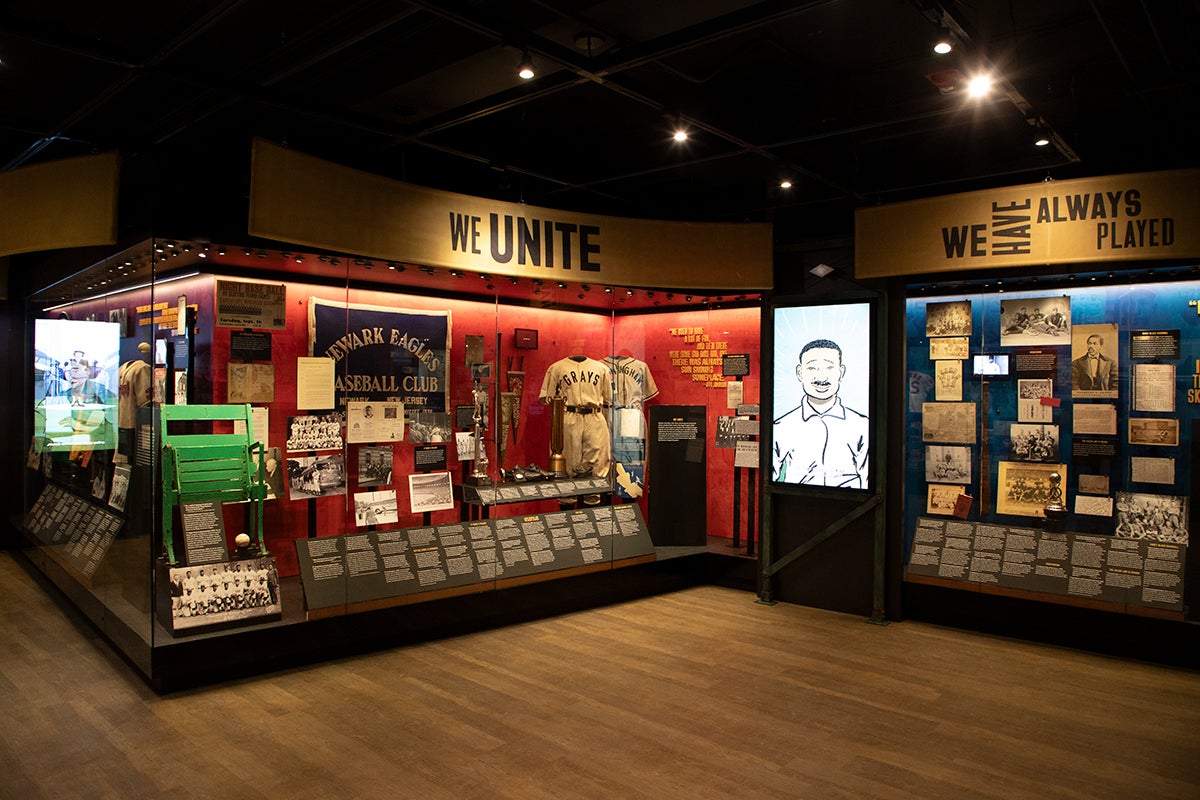
Located on the Museum’s second floor in the Yawkey Gallery, The Souls of the Game reveals the deep connections between baseball and Black America as well as honoring Black baseball’s history and its impact on the sport and the country.
The Souls of the Game, a title that pays tribute to W.E.B. Du Bois’s seminal 1903 book “The Souls of Black Folk” which Dr. Gerald Early, one of several Curatorial Consultants for the Hall of Fame, has called, “one of the most important books by a Black person written in the 20th century.”
But the exhibit’s storytelling, told through a groundbreaking new perspective, will use quotes and interviews dating back to those trailblazers in the 19th century through current big league stars, giving voice to the men and women whose passion and talent for the game has burned bright as long as the sport has gained a foothold in the American consciousness.
Subtitled Voices of Black Baseball, the exhibit highlights first-person accounts by the many individuals whose Black baseball experiences shaped them, their community, baseball and America at large.
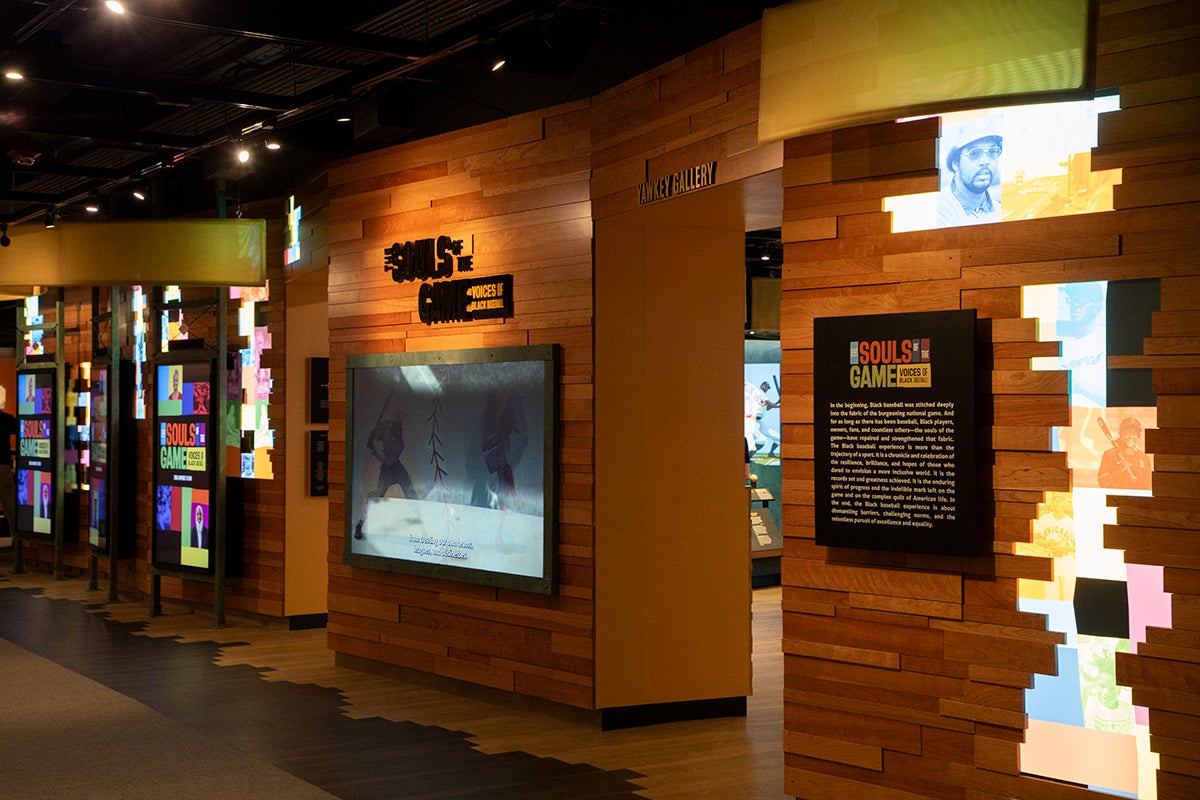
Giving “voice” was always of utmost importance for the Hall of Fame team from The Souls of the Game’s nascent early development to its ultimate fruition. Providing these first-person accounts, whether they come from such legends as Rube Foster, Buck Leonard or Jackie Robinson, or contemporary figures like Harold Reynolds, Derek Jeter or Jim Rice, show how these individuals were shaped by their own Black baseball experiences.
First-person accounts, artifacts, documents and photos, as well as audio and video elements will tell a more inclusive story of baseball, shine a light on and correct misconceptions about Black baseball, and provide an authentic, cohesive narrative of Black baseball history.
The Souls of the Game also includes three different large format video elements that feature nine individuals – three per station – that will tell their stories, which will include quotes from each, running on a continuous loop. Chosen as representatives of various eras, they include Sol White, Satchel Paige, Effa Manley, Wendell Smith, Jackie Robinson, Joe Black, Curt Flood and Ken Griffey Jr.
Another video element, this one interactive, includes interviews with 30 individuals conducted specifically for The Souls of the Game. These will include a menu where themes such as “Representation Matters,” “Passing the Torch” and “Facing Racism” can be selected. Among those interviewed include Hall of Famers Harold Baines, Andre Dawson, Fergie Jenkins, Derek Jeter, Tony Peréz, Tim Raines, Jim Rice, Lee Smith, Billy Williams and Dave Winfield.
Bill Francis is the senior research and writing specialist at the National Baseball Hall of Fame and Museum
